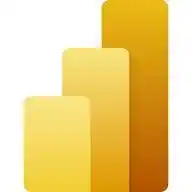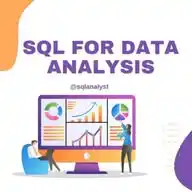
Data Analysts - SQL, Tableau, Excel, Power BI & Python
25.8K subscribers
About Data Analysts - SQL, Tableau, Excel, Power BI & Python
Perfect channel for Data Analysts
Similar Channels
Swipe to see more
Posts

7 Days Excel Roadmap 👇👇


If you are interested to learn SQL for data analytics purpose and clear the interviews, just cover the following topics 📚 1. Install MYSQL workbench 💻 2. Select 📈 3. From 📁 4. where 🔍 5. group by 📊 6. having 🔍 7. limit 📈 8. Joins (Left, right , inner, self, cross) 🤝 9. Aggregate function ( Sum, Max, Min , Avg) 📊 10. windows function ( row num, rank, dense rank, lead, lag, Sum () over) 🔍 11. Case 🤔 12. Like 🔍 13. Sub queries 📊 14. CTE 📁 15. Replace CTE with temp tables 🔄 16. Methods to optimize Sql queries 🚀 17. Solve problems and case studies Trick: Just copy each term and paste on youtube and watch any 10 to 15 minute on each topic and practise it while learning , By doing this , you get the basics understanding 📚 18. Now time to go on youtube and search data analysis end to end project using sql 📊 19. Watch them and practise them end to end 📺 20. learn integration with power bi 📈 In this way , you will not only memorize the concepts but also learn how to implement them in your current working and projects and will be able to defend it in your interviews as well 🎉. Like for more 👍 Hope it helps :) 😊

4 Career Paths In Data Analytics 1) Data Analyst: Role: Data Analysts interpret data and provide actionable insights through reports and visualizations. They focus on querying databases, analyzing trends, and creating dashboards to help businesses make data-driven decisions. Skills: Proficiency in SQL, Excel, data visualization tools (like Tableau or Power BI), and a good grasp of statistics. Typical Tasks: Generating reports, creating visualizations, identifying trends and patterns, and presenting findings to stakeholders. 2)Data Scientist: Role: Data Scientists use advanced statistical techniques, machine learning algorithms, and programming to analyze and interpret complex data. They develop models to predict future trends and solve intricate problems. Skills: Strong programming skills (Python, R), knowledge of machine learning, statistical analysis, data manipulation, and data visualization. Typical Tasks: Building predictive models, performing complex data analyses, developing machine learning algorithms, and working with big data technologies. 3)Business Intelligence (BI) Analyst: Role: BI Analysts focus on leveraging data to help businesses make strategic decisions. They create and manage BI tools and systems, analyze business performance, and provide strategic recommendations. Skills: Experience with BI tools (such as Power BI, Tableau, or Qlik), strong analytical skills, and knowledge of business operations and strategy. Typical Tasks: Designing and maintaining dashboards and reports, analyzing business performance metrics, and providing insights for strategic planning. 4)Data Engineer: Role: Data Engineers build and maintain the infrastructure required for data generation, storage, and processing. They ensure that data pipelines are efficient and reliable, and they prepare data for analysis. Skills: Proficiency in programming languages (such as Python, Java, or Scala), experience with database management systems (SQL and NoSQL), and knowledge of data warehousing and ETL (Extract, Transform, Load) processes. Typical Tasks: Designing and building data pipelines, managing and optimizing databases, ensuring data quality, and collaborating with data scientists and analysts.

𝗙𝗥𝗘𝗘 𝗖𝗲𝗿𝘁𝗶𝗳𝗶𝗰𝗮𝘁𝗶𝗼𝗻 𝗖𝗼𝘂𝗿𝘀𝗲𝘀 😍 - SQL - Blockchain - HTML & CSS - Excel, and - Generative AI These free full courses will take you from beginner to expert! 𝐋𝐢𝐧𝐤 👇:- https://pdlink.in/4gRuzlV Enroll For FREE & Get Certified 🎓


*List of most widely used window functions in SQL:* ROW_NUMBER(): Assigns consecutive numbers starting from 1 to all rows in the table RANK: Assigns a rank value to each row within each ordered partition of a result set NTILE(): Returns the group number for each of the rows in the partition LEAD() and LAG(): Compares the rows with their previous or next rows PERCENTILE_CONT: Compares each employee's salary with the average salary in his or her department More resources for data analysts: https://t.me/sqlspecialist

Excel Cheat Sheet for Aspiring Data Analysts 📊 As an aspiring data analyst, mastering Excel is like having a superpower! Here’s a cheat sheet to get you started: ✔️ VLOOKUP & HLOOKUP: Quickly find and retrieve data across your spreadsheets. ✔️ Pivot Tables: Summarize and analyze large data sets with ease. ✔️ IF Statements: Make decisions in your sheets with logical tests ✔️ INDEX & MATCH: More flexible data lookup compared to VLOOKUP. ✔️ Conditional Formatting: Highlight important data trends and outliers. ✔️ Data Validation: Control the type of data entered into your sheets. ✔️ SUMIF & COUNTIF: Add and count cells that meet specific criteria. ✔️ Macros: Automate repetitive tasks to save time. With these tools in your arsenal, you’ll be able to turn raw data into actionable insights effortlessly. Join for more Resources : https://t.me/excel_data Hope this helps you 😊

Top 10 Excel Functions Used by Data Analysts 1. VLOOKUP: • Example: =VLOOKUP(lookup_value, table_array, col_index_num, [range_lookup]) • Usage: Searches for a value in the first column of a table and returns a value in the same row from another column. 2. HLOOKUP: • Example: =HLOOKUP(lookup_value, table_array, row_index_num, [range_lookup]) • Usage: Similar to VLOOKUP, but searches in the first row of a table. 3. INDEX-MATCH: • Example: =INDEX(return_range, MATCH(lookup_value, lookup_range, 0)) • Usage: A more flexible alternative to VLOOKUP or HLOOKUP for lookups. 4. SUMIFS: • Example: =SUMIFS(sum_range, criteria_range1, criteria1, [criteria_range2, criteria2, ...]) • Usage: Adds values based on multiple criteria. 5. COUNTIFS: • Example: =COUNTIFS(criteria_range1, criteria1, [criteria_range2, criteria2, ...]) • Usage: Counts cells based on multiple criteria. 6. AVERAGEIFS: • Example: =AVERAGEIFS(average_range, criteria_range1, criteria1, [criteria_range2, criteria2, ...]) • Usage: Calculates the average based on multiple criteria. 7. CONCATENATE: • Example: =CONCATENATE(text1, [text2, ...]) or =text1 & [text2] • Usage: Combines text from multiple cells into one cell. 8. IF: • Example: =IF(logical_test, value_if_true, value_if_false) • Usage: Performs conditional logic based on a specified condition. 9. PivotTables: • Usage: Allows for dynamic data summarization and analysis in a table format. 10. SUM, AVERAGE, COUNT: • Examples: =SUM(range), =AVERAGE(range), =COUNT(range) • Usage: Basic functions for simple calculations on a range of cells. Excel Resources 👇👇 https://t.me/excel_data Hope this helps you 😊

✨ *The STAR method is a powerful technique used to answer behavioral interview questions effectively.* It helps structure responses by focusing on Situation, Task, Action, and Result. For analytics professionals, using the STAR method ensures that you demonstrate your problem-solving abilities, technical skills, and business acumen in a clear and concise way. Here’s how the STAR method works, tailored for an analytics interview: 📍 1. Situation Describe the context or challenge you faced. For analysts, this might be related to data challenges, business processes, or system inefficiencies. Be specific about the setting, whether it was a project, a recurring task, or a special initiative. Example: “At my previous role as a data analyst at XYZ Company, we were experiencing a high churn rate among our subscription customers. This was a critical issue because it directly impacted revenue.”* 📍 2. Task Explain the responsibilities you had or the goals you needed to achieve in that situation. In analytics, this usually revolves around diagnosing the problem, designing experiments, or conducting data analysis. Example: “I was tasked with identifying the factors contributing to customer churn and providing actionable insights to the marketing team to help them improve retention.”* 📍 3. Action Detail the specific actions you took to address the problem. Be sure to mention any tools, software, or methodologies you used (e.g., SQL, Python, data #visualization tools, #statistical #models). This is your opportunity to showcase your technical expertise and approach to problem-solving. Example: “I collected and analyzed customer data using #SQL to extract key trends. I then used #Python for data cleaning and statistical analysis, focusing on engagement metrics, product usage patterns, and customer feedback. I also collaborated with the marketing and product teams to understand business priorities.”* 📍 4. Result Highlight the outcome of your actions, especially any measurable impact. Quantify your results if possible, as this demonstrates your effectiveness as an analyst. Show how your analysis directly influenced business decisions or outcomes. Example: “As a result of my analysis, we discovered that customers were disengaging due to a lack of certain product features. My insights led to a targeted marketing campaign and product improvements, reducing churn by 15% over the next quarter.”* Example STAR Answer for an Analytics Interview Question: Question: *"Tell me about a time you used data to solve a business problem."* Answer (STAR format): 🔻*S*: “At my previous company, our sales team was struggling with inconsistent performance, and management wasn’t sure which factors were driving the variance.” 🔻*T*: “I was assigned the task of conducting a detailed analysis to identify key drivers of sales performance and propose data-driven recommendations.” 🔻*A*: “I began by collecting sales data over the past year and segmented it by region, product line, and sales representative. I then used Python for #statistical #analysis and developed a regression model to determine the key factors influencing sales outcomes. I also visualized the data using #Tableau to present the findings to non-technical stakeholders.” 🔻*R*: “The analysis revealed that product mix and regional seasonality were significant contributors to the variability. Based on my findings, the company adjusted their sales strategy, leading to a 20% increase in sales efficiency in the next quarter.” Hope this helps you 😊

AccioJob is conducting a walk-in drive with Icanheal! ✨ 💼 Positions: Python Django Developer and Flutter Developer 💰 CTC: ₹5-8 LPA 📍Work Location: Mumbai Don't miss out! 🚀 👉🏻 Apply Now: * Python Django Developer: https://links.acciojob.com/3D2UIR2 * Flutter Developer: https://links.acciojob.com/4hM8Dd9

TOP 10 Excel Formulas Everyone Should Know 👇 🔵 SUM =SUM(A1:A10) — Adds values. 🔵 AVERAGE =AVERAGE(A1:A10) — Finds average. 🔵 COUNT =COUNT(A1:A10) — Counts numbers. 🔵 COUNTA =COUNTA(A1:A10) — Counts non-empty cells. 🔵 IF =IF(A1>10, "Yes", "No") — Conditional result. 🔵 MIN =MIN(A1:A10) — Smallest value. 🔵 MAX =MAX(A1:A10) — Largest value. 🔵 VLOOKUP =VLOOKUP(B1, A1:D10, 2, FALSE) — Looks up value. 🔵 & =A1 & " " & B1 — Joins text. 🔵 LEN =LEN(A1) — Counts characters.













